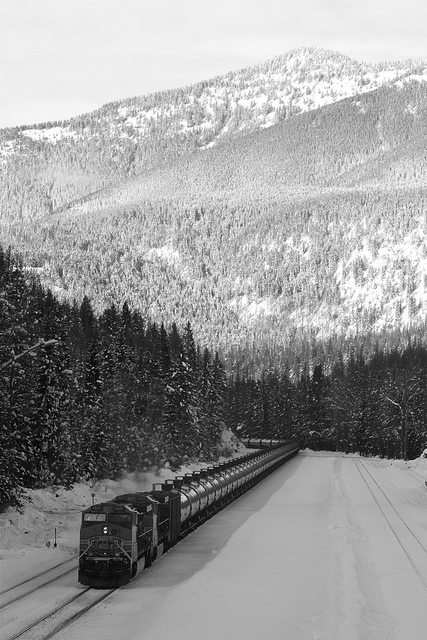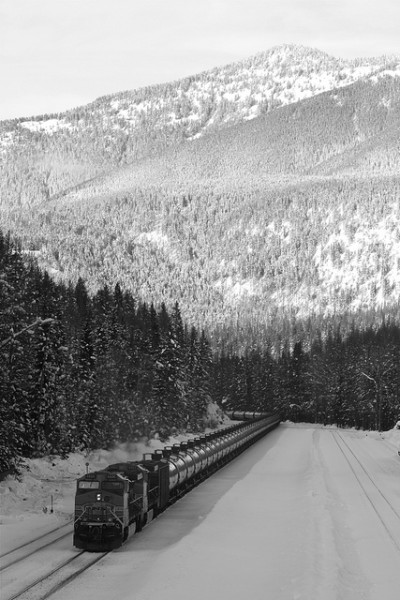Executive Summary
Since 2012, more than a dozen plans have emerged to ship crude oil by train to Northwest refineries and port terminals. Moving large quantities of oil by rail would be a major change for the Northwest’s energy economy, yet most media accounts present only a fragmented view of the developments, and government regulators evaluate the projects largely in isolation from one another.
“The Northwest’s Pipeline on Rails” presents the most comprehensive, region-wide review of all the oil-by-rail projects planned or currently operating in the Pacific Northwest. It finds that:
- In Oregon and Washington, 15 refineries and port terminals are planning, building, or already operating oil-by-rail shipments.
- If all of the projects were built and operated at full capacity, they would require more than 100 loaded mile-long trains per week to traverse the Northwest’s railway system. Many worry about the risk of oil spills along the region’s extensive rail network, particularly in remote locations where emergency response would be challenging.
- Taken together, the oil-by-rail projects planned for the Northwest would be capable of delivering far more fuel than the region is capable of handling at its refineries. Ironically, two of the facilities that would handle oil by rail were originally built to supply renewable fuels, and a third proposal aims to blend crude oil with biofuel from foreign sources.
- The projects are largely designed to transport and handle light shale oil from the Bakken oil formation in North Dakota, but the infrastructure could also be used to export heavy Canadian oil. In fact, if all of the oil-by-rail projects were built, they would be capable of moving 1,019,872 barrels per day—nearly as much as the combined capacity of the two controversial pipelines planned in British Columbia, and 23 percent more than the planned Keystone XL pipeline, all of which are designed to ship Canadian crude.
- On the Salish Sea, five of the region’s six refineries already receive oil-by-rail shipments. A trio of projects at the Port of Grays Harbor would move oil along the Washington coast. And on the Columbia River, two facilities in Oregon are already receiving oil-by-rail shipments, while two more in Washington are seeking permits to receive loaded crude oil trains, including plans for the largest such facility anywhere in North America.
Care to comment? The report is also featured on our blog.
Note: Report updated July 2015, originally published June 2013.
WATCH: The report’s author, Eric de Place, summarizes the report’s findings in this video. [NOTE: The figures cited in this video represent numbers from the 2013 report. Updated numbers can be found in the report linked above.]








